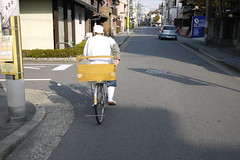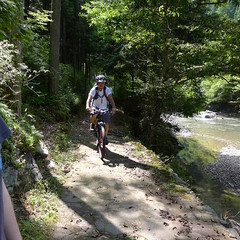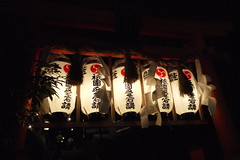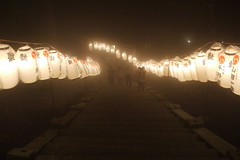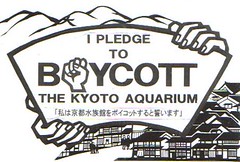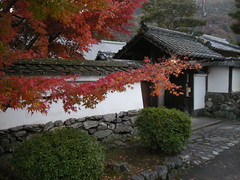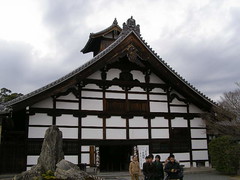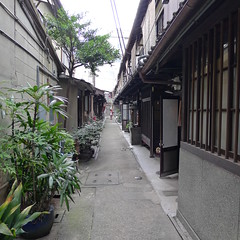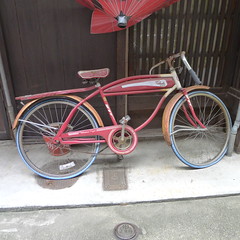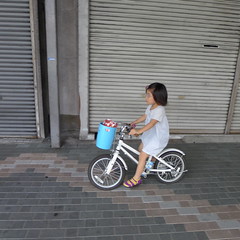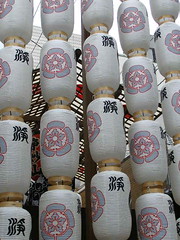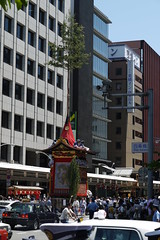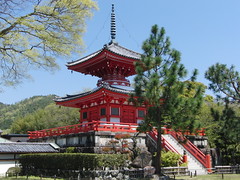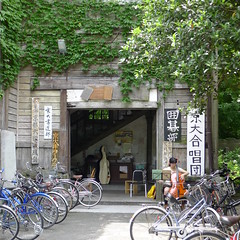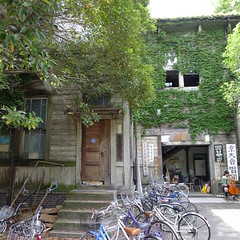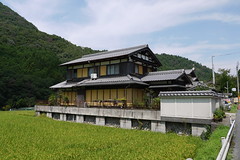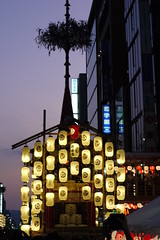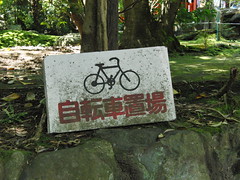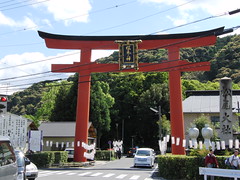
自転車で嵐山の松雄大社へ
This week's Arashiyama
route will be a short ride over to Matsuo Taisha Shrine and then down to the Moss Temple (Kokedera, in Japanese).
Crossing the Toketsugyo Bridge, we head down the
bike path that goes almost all the way to
Nara. It follows the Katsura River.
Matsuo Taisha Shrine is about 10 - 15 minutes at most of flat riding from Arashiyama. It was founded in 701 C.E. by hge head of the Hata clan, which founded Fushimi Inari Shrine.
The Hatas, originally from Korea, brought with them advanced technology to the then less advanced Japanese.
The shrine is a patron saint for rice cultivation, miso and soy production, building, weaving, birth, and traffic safety (!).
In April and May, many roses come into bloom.
The next stop is Saihoji Temple, also known as the Moss Temple (Kokedera).
This is the most expensive temple to visit in Kyoto. Reservations are necessary and, it costs 3,000 yen to enter. Visitors then spend about twenty minutes copying the sutra - writing (tracing) Chinese characters - before being released to wander the grounds.
Kokedera is believed to have been established by the monk Gyoki before the founding of Kyoto. In 1339 C.E., it was then converted into a Zen temple by Muso Soseki.
Today there are more than 120 types of moss within the grounds, and a pond that is shaped like the Chinese character
kokoro (heart or soul) - 心 - and a fabulous rock garden.
For more culture, it is not far to ride on to Katsura Imperial Villa. From the Moss Temple, go back to Matsuo Taisho and back down on the bike lane that parallels the Katsura River. Ride about 10 minutes to the next bridge and go up to street level. There are signs that will take you the five to seven minutes south and then east to the Villa. Katsura also requires a reservationl
Information
The most direct way to get from central Kyoto to Arashiyama is to head west on Marutamachi Dori - for about 30 minutes.
For those with a bike bag, the most pain free way is to take the train to JR Saga Arashiyama is a 15+ minute from Kyoto Station.
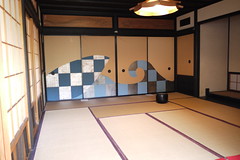
© CycleKyoto.com
CycleKyoto Home Page
Tags
Japan
Touring
Kyoto
Cycle
Arashiyama
